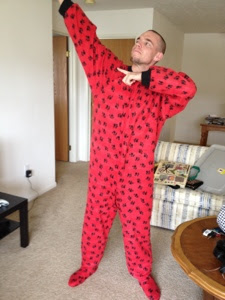 |
| Pre and Post- sewing solutions |
I always tell my fiancé that sewing is like driving- just press the pedal and steer straight. Well, to tell the truth if a sewing machine were a car I'd be pulled over doing field sobriety tests just pulling out of the driveway.
Thats right- I don't sew a straight line all that well And most of the time, you wouldn't notice. I barely even noticed myself. Usually I'm sewing pajamas or other simple projects like aprons for my nieces with wide seam allowances with nothing in the project that amplifies my impairedness. So when I chose to make an optical illusion quilt (from this book), I learned just how drunken I seemed at the helm of my machine.
The quilt I chose requires sewing several long strips together, then cutting those blocks into strips and sewing them together another way. Some of these strips are nice and wide and quite forgiving to small errors. However, some of the strips are as small as 3/4". With 1/4" seams on both sides. Even taking too big of a breath while sewing can show on these areas of the blocks.
The book has really good descriptions on how to cut very straight strips (another thing I didn't realize I did unsuccessfully). It's a little tedious, but certainly plays into getting straight seams.
For sewing a straight seam, the author suggests using mole tape to guide your seams, placing it 1/4 inch from the seam. However, I didn't want to go looking for mole tape (although it's probably easy to find at a pharmacy). I was also afraid of it making my machine sticky or marking it, as well as the inconvenience of removing it and putting it on again if I changed projects (looks like I finally accepted the fact that my projects take me uh, just a little longer than planned, and maybe other things would get thrown in there in the meantime).
 |
| Needle moved over- you can see it doesn't line up with the red center mark anymore |
Another suggestion from my fiancé's mom was to move the needle. Sure enough, with a piece of graph paper I was able to determine that I needed to move my needle over 2.5 to the right to get a 1/4 inch seam along the edge of the plate. For a little extra speed, I use my finger to help guide the seams.
Hopefully I'll have a completed project before we need a blanket again...
What tricks do you use to ensure straight, narrow seams?

























